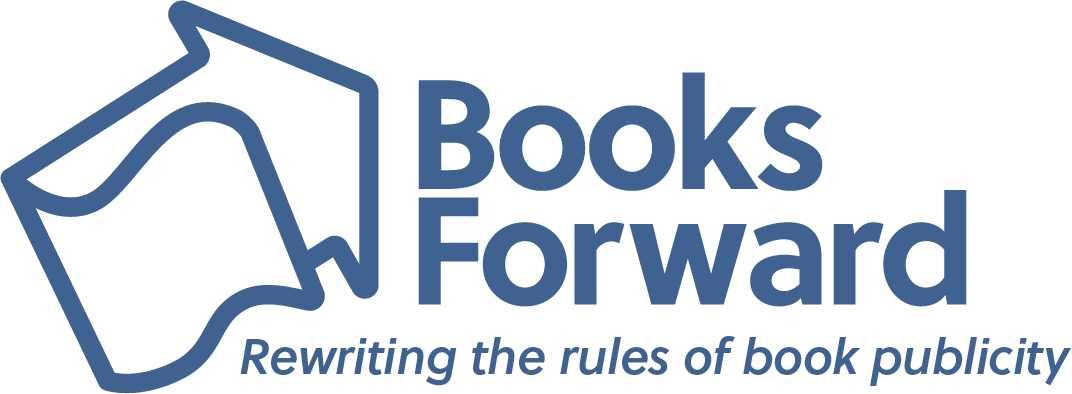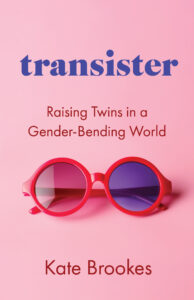 NEW YORK, New York – In her upcoming memoir, award-winning journalist Kate Brookes shares the story of her daughter’s transition and the harsh realities facing transgender kids and their families.
NEW YORK, New York – In her upcoming memoir, award-winning journalist Kate Brookes shares the story of her daughter’s transition and the harsh realities facing transgender kids and their families.
“Transister” (She Writes Press, Aug. 8, 2023) is the story of a family in transition. Not a prescriptive narrative but an affirming one. A raw, honest, sometimes humorous account of Brookes’ journey as her young child grapples with gender identity and becomes her authentic self.
Brookes has longed to become a mother for as long as she can remember. And for almost as long, she has harbored a fierce determination to parent her children differently — better — than her own mentally ill mom parented her. To create the “normal” family she’s always wished for. And when she gives birth to twins after two years of fertility struggles, she is, admittedly, hugely relieved that she’s found herself with two boys. There will be no need for her, a decidedly un-girly girl, to braid hair, buy Barbie dolls, or pick out party dresses for her kids. Boys. Easy. Right?
By the time her twins are 8, Brookes has had two realizations: 1) her obstetrician’s “it’s another boy” announcement was flat-out wrong, and 2) there is no such thing as a “normal” family — and that’s a beautiful thing.
“Transister: Raising My Twins in a Gender Bender World”
Kate Brookes | Aug. 8, 2023 | She Writes Press | Memoir
Paperback | 9781647425210 | $17.95
Ebook | 9781647425227 | $8.99
About the Author

Kate Brookes is the author of “Transister” (She Writes Press, Aug. 8, 2023). She is an award-winning TV reporter/anchor-turned-producer/filmmaker who has interviewed everyone from Beyonce to the late Barbara Walters, field produced for The Discovery Channel, written for Today.com, and emceed galas, live events, and webcasts for nonprofits and Fortune 500 companies. An activist since her teenage years, Kate has devoted countless hours to the causes she supports, including mental health, housing justice, and anti-gun legislation. But it wasn’t until realizing she’d completely botched the birth announcement for her twins that she became active in LGBTQ causes. Kate lives with her husband and rock star children in New York City. Find out more about her at TransisterMom.com.
Follow Kate Brookes on Facebook and Twitter
In an interview, Kate Brookes can discuss:
- Navigating her daughter’s transition as a family while facing misunderstandings and prejudice
- Her personal journey to acceptance and learning how to mother a transitioning daughter
- The harsh – and often life and death – realities of parenting a trans child
- How insights from parenting a transgender child can help all parents supporting non-conforming children
- How to discuss gender identity with children, even at an early age
- The importance of supporting and normalizing trans experiences
- Supporting your child’s coming out process
An Interview with
Kate Brookes
Before we dive into everything else, can you introduce us to you and your family?
I’m the proud mom to twin 14-year-olds, Gabriella (Gabby) and Jacob, both of whom are absolute rock stars, one of whom is transgender. My husband, Mike, and I are raising them in New York City and doing our best to embrace both of our kiddos and meet them where they are. We spent the first 8 years of parenthood operating under the notion we’d birthed twin boys (umm, that’s certainly what the OBGYN told us when he pulled said kids out of me), and the last 6 years, first adjusting to… and then celebrating the reality that one of our sons is actually our daughter.
Your memoir is candid, raw, forthcoming – but also, at times, funny. Why was it important to you to incorporate humor into “Transister?”
Honestly, sometimes it’s easier to laugh than it is to cry. And believe me, I cried a lot while watching my daughter grapple with her gender identity. But, sometimes stuff really is funny, and why not acknowledge the humor? I mean, when’s the last time your 3-year-old son walked down the street pointing to women’s shoes and saying, “Heels, flats, heels, flats!” Or your 9-year-old daughter asked if her dress makes her penis look big? Besides, humor can be an effective way to connect with people and to address/tackle “taboo subjects” in a non-threatening way. For all of these reasons and more, it was important for me to include some levity in “Transister.”
When did your daughter first realize she was trans? Did you realize it or did she tell you?
My daughter realized she was trans at 8 years-old. “Gideon” and I were walking along Broadway, holding hands, when we stopped at a red light and he looked up at me and said, “Mama, I think I’m a transister.” To which I replied, “Do you mean transgender?” “Yes, when I was in your tummy,” Gideon explained, “it was a mistake. I was supposed to come out a girl.” The reality? I knew “he” was likely a “she” for years and had even begun attending support groups for parents of gender non-conforming and trans kids. But my husband and I did our best to let things unfold naturally and allow our kiddo to realize who she was at her own pace.
Did you realize immediately it was her identity and not “just a phase?”
I had no doubts this was her identity and never once thought otherwise. Granted, years before she socially transitioned I hoped the tutus, Barbie dolls, and YouTube makeup tutorials were “just a phase.” And part of me wished our kiddo was “just gay,” not because we’d love our son any more than we’d love our daughter, but because statistically when it comes to healthcare, employment, and suicidal tendencies, it’s easier to be gay than it is transgender. Ultimately, the fact that my daughter was insistent, consistent and persistent about her gender identity further confirmed for me that she was indeed a girl, and a beautiful one at that.
Did any part of you resist this realization? How do you navigate that?
We 100% embraced her realization and declaration. Keep in mind, we’ve always viewed ourselves as accepting, uber liberals from the Upper West Side of Manhattan. And yet, when I look back, I’m somewhat embarrassed (maybe even ashamed?) to acknowledge there were definitely times I squashed my kiddo’s inclinations. Case in point? At around 4 or 5 years old, she wanted a Disney princess comforter. My response? “Oh, wow, the pink and purple background won’t match your blue walls. Bummer. Let’s see if we can find something else that goes.” Or the time my kiddo wanted a Cinderella birthday cake, and my husband, Mike, and I chose an alternative. At the time, we told ourselves we were doing what was best for both of our twins so they wouldn’t face ridicule. But in retrospect, I think I was the one who feared ridicule.
What advice would you give other parents of children who identify as trans? What questions should they ask? What support can they offer?
Accept your child. Love your child. Support your child. Even if you don’t understand your child. Studies show…and common sense reinforces the notion that children whose gender identities are affirmed have much better outcomes socially, emotionally and academically than kids whose parents don’t accept them. Think about it – all most people want is to feel loved, safe and protected. Trans kids are no different.
At what point did you begin to change pronouns and publicly identify your child as your daughter?
About 6 months before our daughter came out publicly, she asked “us” to use female pronouns and call her by girls names, but only at home and only when it was just the four of us. Of course, Mike and I unintentionally botched the pronouns early on; it was admittedly difficult to shift to she/her after saying he/him for 8 years. And the new name? It probably would have been easier if there was just one. Our daughter went through 12 names (Jennifer, Liv, Phoebe, etc.) before landing on one that stuck. While not uncommon, I know of a parent who wrote her kid’s revolving names on a calendar to keep track, it was often difficult to remember her current name and address her accordingly. It wasn’t until Gabriella started 3rd grade at a new school that, with her permission, we began publicly identifying her as a girl.
How has Gabriella’s twin brother, Jacob, handled the transition? Did you experience any grief over the “loss” of your son?
Initially I not only grieved the loss of my son, but also the loss of the “normal” family I was trying to create, the one I pined for ever since I was a child. Over time, though, my husband and I realized we didn’t lose anything. Rather, we gained a happier child, one who’d now live as her authentic self, and we celebrated the arrival of our daughter. And that normal family? I’ve learned there’s no such thing, of course, and I’m actually good with that! As for Jacob, initially he focussed solely on the loss…his loss…of his twin brother. He was just 8 years old – who could blame him? It was a lot for anyone to comprehend, let alone a kid in single digits. Jacob was part confused, part angry, and part embarrassed. I’m happy to report that in the years since Gabriella’s transition, Jacob has developed an incredibly close relationship with his sister. Different from the one he had with his brother, and perhaps even more special.
How did your friends and family react to Gabriella’s transition?
My friends and family were overwhelmingly supportive of Gabriella’s transition. Some of them had seen the signs (her growing dress collection, use of makeup, etc.) over the years and weren’t surprised when we shared the news; others had no idea Gabby had been grappling with her gender identity and still seemed to take the change in stride. That said, not everyone “approved” of our daughter’s transition or how we were parenting our child. And we did lose a few friends, including several who were so close we considered them family. Disappointing, on the one hand. But my husband and I truly believe if you don’t support our family, then good riddance… we have no place for you in our lives.
How did your daughter’s friends react? Did she come out to everyone at once?
Most of Gabby’s friends were not only super supportive when she came out, but also not surprised. (Okay, there was that one friend from day camp who did a double-take when she bumped into Gabby on the street and realized G was sporting long hair and a dress. But once she realized it was the same kid she swam and played with the previous summer, the friend immediately hugged my daughter and asked for a playdate.) Mike and I sent a letter to friends, family, and parents of Jacob and Gabby’s friends, a letter explaining her social transition, new name and new pronouns, which helped facilitate her “coming out.” It also gave parents a “heads up” and the opportunity to discuss the change with their kids before they encountered our daughter for the first time.
You live in New York City, where gender-affirming care is more accessible. What advice do you have for parents of trans kids in areas where access to gender non-conformity is less accepted?
First, I have to acknowledge the privilege my daughter and our entire family have because we live in a place where gender-affirming healthcare is more accessible and gender non-conformity is readily accepted. But let’s be clear, geography shouldn’t be a privilege or a barrier. Trans people should be able to access the resources and support they need regardless of location. That said, I’d recommend parents seek out both emotional and medical support for their kiddos, whether it’s virtual or in-person, as early as possible. Organizations like The Trevor Project and PFLAG are accessible to anyone online and can be incredibly helpful in locating and connecting families with local resources. Support groups, therapists, gender-affirming healthcare – all of these can and do play a critical role in the life of a trans child and their family. No one should feel alone in this journey.
Anti-trans sentiment is unfortunately ubiquitous, even in the more liberal areas of the country. How do you navigate and manage the fear associated with this?
Wine and Xanax are key. Kidding. Sort of. Let’s be real; anti-trans sentiment is rampant in our country, and as the mom of a trans daughter, it’s incredibly stressful…and scary…to turn on the TV and hear some horrible anti-trans rant from a politician…or to overhear a random person on the street spewing anti-trans hate. I find solace knowing that my daughter has friends and family who love and support her…and a mom and dad who will do anything to protect her.
What message do you have for politicians who support anti-trans legislation?
First, it’s “interesting” that so many politicians who support anti-trans legislation identify as pro-life. I would opine that if they were truly pro-life..and wanted to ensure all of their constituents remained alive, they’d support gender affirming healthcare. But, I’m not sure logic works when dealing with angry and scared people – and I do believe that anger and fear are driving most, if not all, of the anti-trans legislation. Regardless, my message is two-fold: First, I’d remind politicians that transgender people are, first and foremost, people…people like you and me who are just trying to live happy, healthy lives. And politicians are elected to represent all of their constituents, not just the rich people, or the white people, or the cisgender people. Second, I’d attempt to play to their emotions and ask how they might react if their child or grandchild came out as transgender. Would they support them or legislate against them? And finally, (I guess my message is three-fold), I’d make sure said politicians know that I and my posse of equal rights supporting, left leaning, liberal minded, and open-hearted mama (and papa) bears won’t go down without a fight!
Your book ends with Gabriella and Jacob entering the fourth grade. Tell us about them today. How are they doing?
Gabriella and Jacob are now 14-years-old and total rock stars. Period! Both will be entering high school in the fall, both are taller than me (yup, I’m now the runt of the family) and both are smart, funny, empathetic and beautiful and handsome, respectively. Gabriella’s superpower is making friends – her social calendar makes my head spin!!! And Jacob is killing it on the basketball court – his three-pointers rival that of athletes twice his age. When I became a mom, I remember telling my best friend that all I wanted was for my twins to be happy, healthy and kind. Suffice it to say, they’re well on their way.

A former award-winning journalist with national exposure, Marissa now oversees the day-to-day operation of the Books Forward author branding and book marketing firm, along with our indie publishing support sister company Books Fluent.
Born and bred in Louisiana, currently living in New Orleans, she has lived and developed a strong base for our company and authors in Chicago and Nashville. Her journalism work has appeared in USA Today, National Geographic and other major publications. She is now interviewed by media on best practices for book marketing.
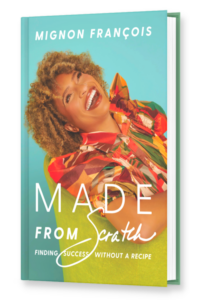 Nashville, TN
Nashville, TN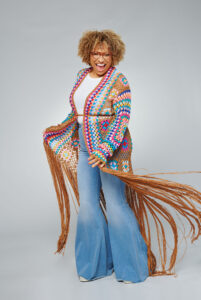 Mignon François is a speaker, entrepreneur, and community leader who has inspired thousands through her “Follow Your Spirit” approach. After years of drowning in debt and brokenness, Mignon founded The Cupcake Collection in 2008, on the last $5 she had to feed her family and turned it into a legacy with over 5 million cupcakes sold.
Mignon François is a speaker, entrepreneur, and community leader who has inspired thousands through her “Follow Your Spirit” approach. After years of drowning in debt and brokenness, Mignon founded The Cupcake Collection in 2008, on the last $5 she had to feed her family and turned it into a legacy with over 5 million cupcakes sold.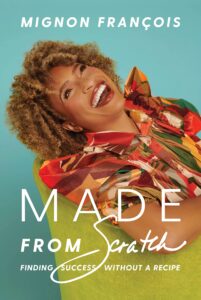
 OCALA, FL
OCALA, FL ANGELA GREENMAN
ANGELA GREENMAN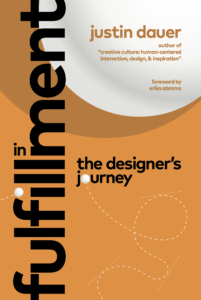 CHICAGO
CHICAGO 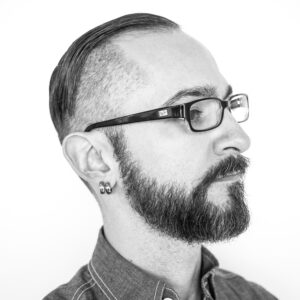 Justin Dauer is an internationally renowned design leader, author, and speaker from Chicago. You’ll find him often engaging with the AIGA’s speaking events, interviewed in Forbes magazine and Medium’s “Forge” publication, and penning articles for Aquent, CEO World Magazine, and A List Apart. He speaks internationally on culture and design, including keynotes at the UXPA International conference, Midwest UX, and St. Louis Design Week. Justin is also the writer of the celebrated book “Creative Culture,” founder of design leadership consultancy Anomali, and a former VP of Design at CVS Health. Find out more about him at
Justin Dauer is an internationally renowned design leader, author, and speaker from Chicago. You’ll find him often engaging with the AIGA’s speaking events, interviewed in Forbes magazine and Medium’s “Forge” publication, and penning articles for Aquent, CEO World Magazine, and A List Apart. He speaks internationally on culture and design, including keynotes at the UXPA International conference, Midwest UX, and St. Louis Design Week. Justin is also the writer of the celebrated book “Creative Culture,” founder of design leadership consultancy Anomali, and a former VP of Design at CVS Health. Find out more about him at  Sacramento, CA
Sacramento, CA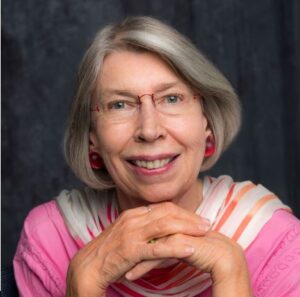 SUZANNE MARRIOTT
SUZANNE MARRIOTT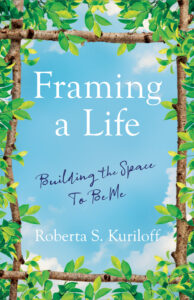 On a blustery Maine day, 39-year-old Roberta S. Kuriloff found herself standing on a plot of land purchased with her former partner, holding a couple of wood stakes to mark off exactly where her new house would sit. No longer their land. No longer their dream. Now, just hers.
On a blustery Maine day, 39-year-old Roberta S. Kuriloff found herself standing on a plot of land purchased with her former partner, holding a couple of wood stakes to mark off exactly where her new house would sit. No longer their land. No longer their dream. Now, just hers. Roberta S. Kuriloff
Roberta S. Kuriloff 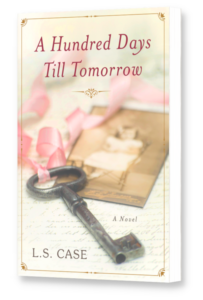 HUNTINGTON, New York
HUNTINGTON, New York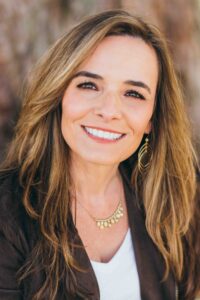 L. S. Case
L. S. Case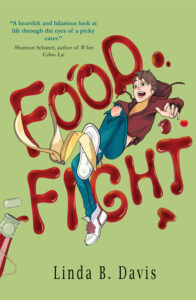 Chicago, IL
Chicago, IL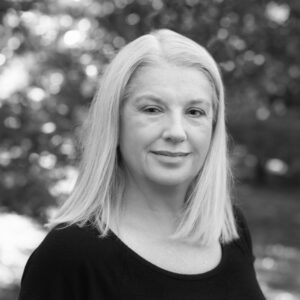 Linda B. Davis
Linda B. Davis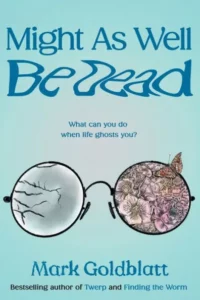 NEW YORK, NY
NEW YORK, NY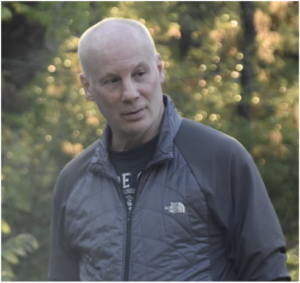 MARK GOLDBLATT
MARK GOLDBLATT 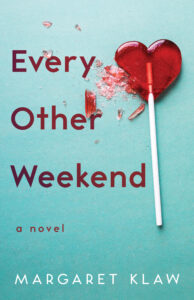 PHILADELPHIA, PA
PHILADELPHIA, PA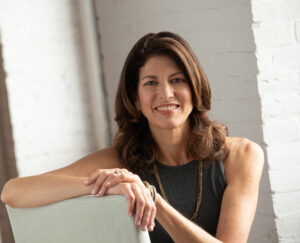 MARGARET KLAW
MARGARET KLAW